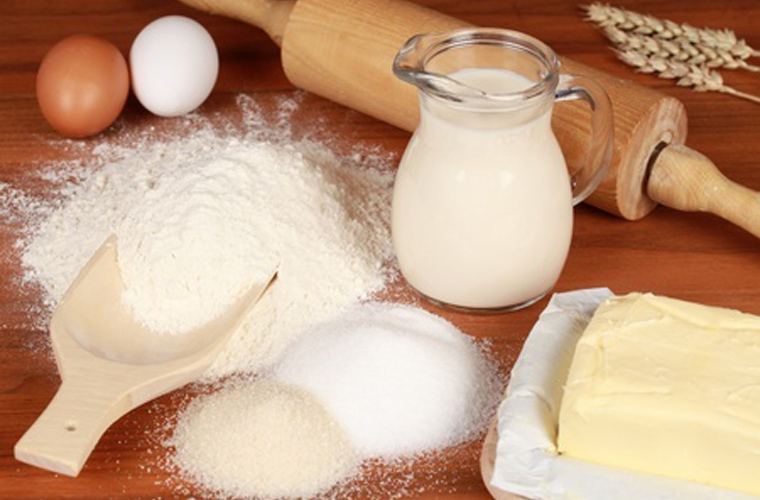Replacing dairy in baking and cooking is easier now that there is an abundance of dairy-free alternatives available at grocery stores. Before replacing any ingredient, it’s important to understand what purpose it serves in order to select an appropriate replacement. The following guide will walk you through the various forms of dairy found in baking, their purpose and provide some dairy-free alternatives.
Milk
The main purpose of milk in baked goods is to improve texture and contribute to moisture.
Replace 1 cup of cow’s milk with:
- 1 cup of an alternative non-dairy creamy beverage like soy milk, rice milk, almond milk, coconut milk or hemp milk.
- It’s important to note that the proteins found in milk from goats, sheep, deer and buffalo are similar to cow’s milk, so it’s important to talk to your allergist before using these as replacements. It is highly likely that people who are allergic to cow’s milk will experience reactions to the milk of other animals.
Buttermilk
Buttermilk is slightly sour and thicker than regular milk, because it is slightly curdled. When the lactic acid of buttermilk is combined with baking soda and heated, carbon dioxide is released and tiny bubbles expand, lift and lighten your baking.
Replace 1 cup of buttermilk with:
- 1 cup of non-dairy milk + 1 tablespoon of white vinegar or lemon juice. Allow to sit for about 1 minute until it curdles.
Cream
Cream is the higher butterfat layer that rises to the top of whole milk. It is labeled according to its butterfat content. Heavy cream is 35-40% butterfat and can be whipped and hold it’s form. The lighter creams are used to add flavour and texture in coffee, puddings and sauces.
Replace in 1 cup of cream with:
- 1 cup of soy or coconut cream (marketed as non-dairy coffee cream), which can be found in the refrigerated section of the grocery store.
- For whipped cream, there are many non-dairy whipped toppings that are rice, soy and coconut based. You can also make your own by refrigerating a can of full fat coconut milk that does not have guar gum as an ingredient, and whisking the solid portion of the separated coconut milk in the same manner that you would whip regular cream.
Yogurt
Yogurt is created by bacterial fermentation of milk, which produces lactic acid that gives it a creamy texture and slightly sour taste. It’s purpose in baking is similar to buttermilk; yogurt reacts with baking soda to lift and lighten your baking.
Replace 1 cup yogurt with:
- 1 cup soy yogurt or coconut yogurt
- 1 cup soy sour cream
- 1 cup unsweetened applesauce
- 1 cup fruit puree
Butter
Butter is used in baking to add flavour and texture, and also helps to keep your baked goods fresh. Many dairy-free butter alternatives are now available in the grocery store which allows us to maintain a buttery flavour in dairy-free baked goods.
Replace 8 tablespoons (1 stick) butter with:
- 8 tablespoons shortening or non-dairy margarine/Buttery Spread (like Earth Balance brand)
- 8 tablespoons vegetable or olive oil
- 6 tablespoons unsweetened applesauce + 2 tablespoons fat of choice

